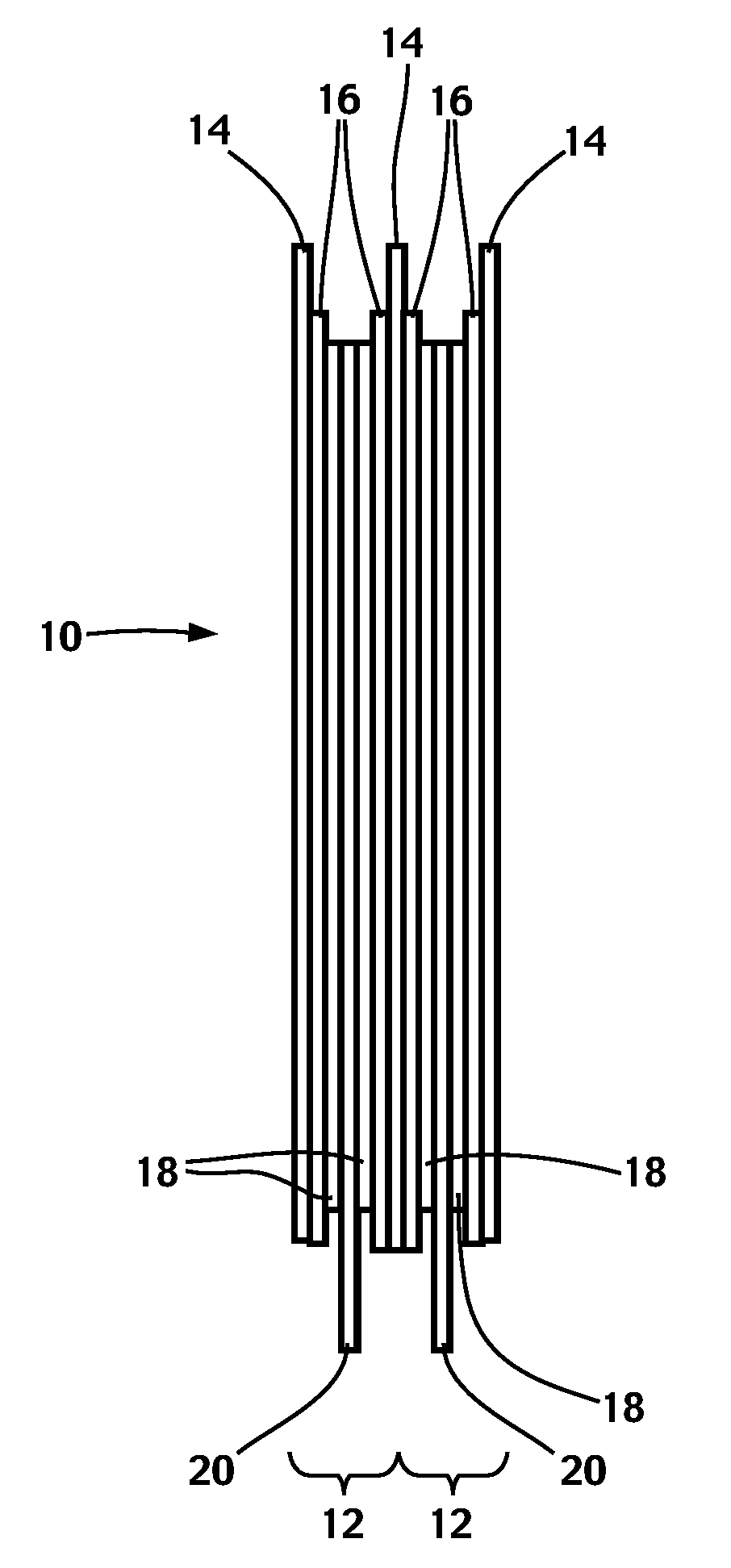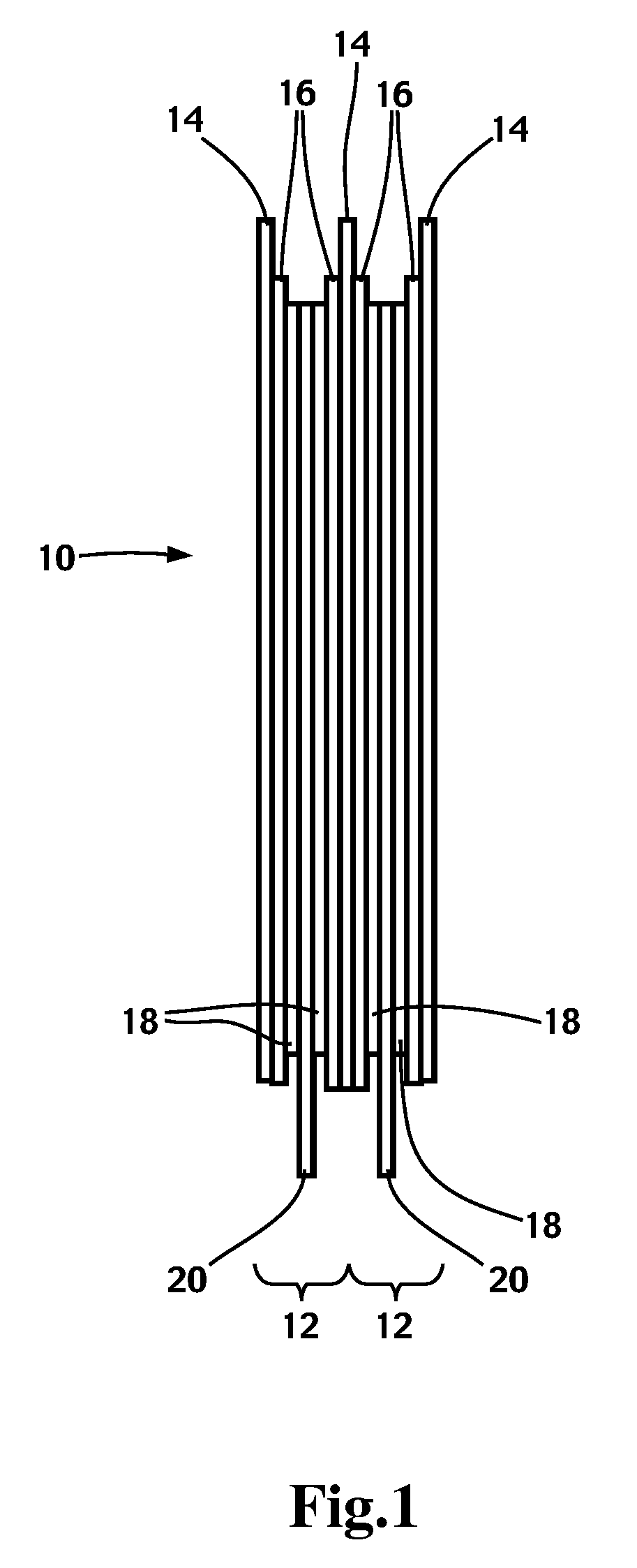Electrolyte for lithium polymer batteries
- Summary
- Abstract
- Description
- Claims
- Application Information
AI Technical Summary
Benefits of technology
Problems solved by technology
Method used
Image
Examples
Embodiment Construction
)
[0011]FIG. 1 illustrates schematically a lithium metal polymer battery 10 having a plurality of electrochemical cells 12 each including an anode or negative electrode 14 made of a sheet of metallic lithium, a solid electrolyte 16 and a cathode or positive electrode film 18 layered onto a current collector 20. The solid electrolyte 16 typically includes a lithium salt to provide ionic conduction between the anode 14 and the cathode 18. The sheet of lithium metal typically has a thickness ranging from 20 microns to 100 microns; the solid electrolyte 16 has a thickness ranging from 10 microns to 50 microns, and the positive electrode film 18 typically has a thickness ranging from 20 microns to 100 microns.
[0012]The internal operating temperature of the battery 10 in the electrochemical cells 12 is typically between 40° C. and 100° C. Lithium polymer batteries preferably include an internal heating system to bring the electrochemical cells 12 to their optimal operating temperature. The...
PUM
| Property | Measurement | Unit |
|---|---|---|
| Pressure | aaaaa | aaaaa |
| Pressure | aaaaa | aaaaa |
| Temperature | aaaaa | aaaaa |
Abstract
Description
Claims
Application Information
 Login to View More
Login to View More - R&D
- Intellectual Property
- Life Sciences
- Materials
- Tech Scout
- Unparalleled Data Quality
- Higher Quality Content
- 60% Fewer Hallucinations
Browse by: Latest US Patents, China's latest patents, Technical Efficacy Thesaurus, Application Domain, Technology Topic, Popular Technical Reports.
© 2025 PatSnap. All rights reserved.Legal|Privacy policy|Modern Slavery Act Transparency Statement|Sitemap|About US| Contact US: help@patsnap.com


